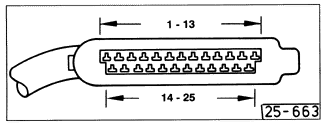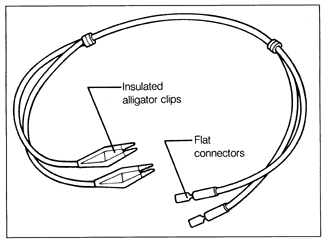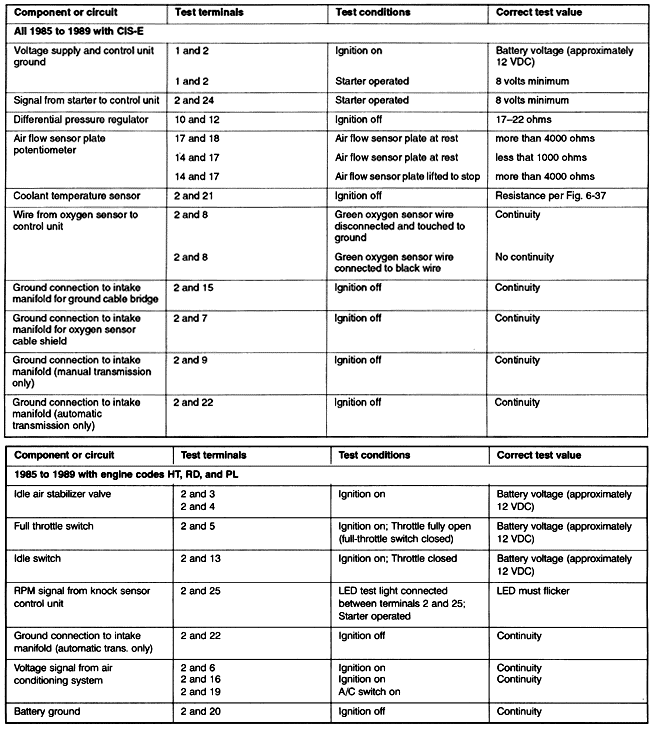Control Unit InputsThe circuit information in Table i is used to make measurements at the CIS-E control unit connector, checking the components and the wiring harness which supply input signals to the control unit. The terminals of the control unit connector are identified in Fig. 6-42.

As a general rule, a complete absence of the voltage or continuity specified in Table i suggests an open circuit in the wiring harness. For more specific information, see CURRENT FLOW DIAGRAMS. Test results which differ from the value specified in the table do not necessarily mean that a component is faulty. Check for loose connections or connections which are inadequate due to contamination or corrosion.
Use care to avoid damaging the delicate connector terminals with meter probes during testing. For best and safest results, fabricate a set of test leads as shown in Fig. 6-43. Use the flat connectors (Volkswagen part no. N 17 457 2 or equivalent) to make contact with female connector terminals, then connect the meter leads to the insulated alligator clips. Before performing the tests indicated by the table, disconnect the coil wire from the center tower of the distributor cap and connect it to ground on the engine block with a jumper wire. With the ignition turned off, disconnect the 25-point connector from the oxygen sensor control unit and test as indicated in Table i. The control unit is located in the upper left side of the engine compartment, beneath the drip tray. The drip tray is clipped into place. Pull it up carefully to remove it for access to the control units.

Table i. CIS-E Electrical Tests
|
